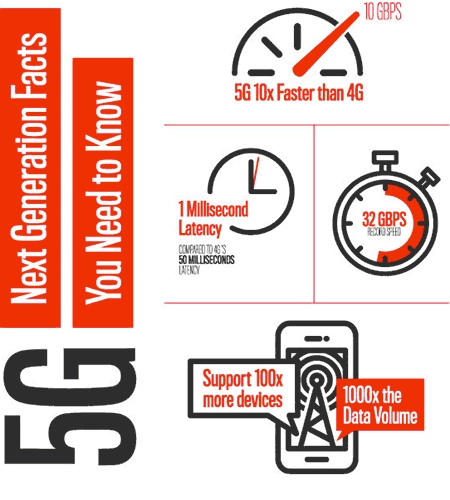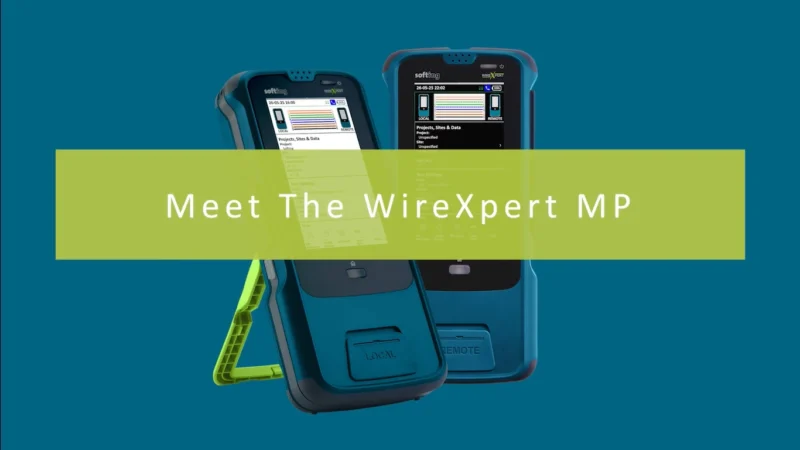5G: Next Generation Facts You Need to Know
5G is slated to join 4G by 2020, bringing new speed, improved connectivity, and enhanced functionality that will unlock even more applications for wireless networks. But just what is 5G?
5G Is the Next Generation in Wireless
It’s probably no surprise 5G stands for the fifth generation of wireless technology.
Is 4G Old News?
Not quite yet. 5G will become a complement to 4G LTE and they’ll work together to deliver improved coverage as 5G becomes more widespread.
How Much Faster Can 5G Really Be?
A lot faster. 4G broke new ground with 1 Gbps data capabilities. 5G’s peak speeds will be 10 Gbps. That means downloading a full-length film in just seconds.

Will 5G Change My Wireless Experience?
While 5G won’t initially change what you can do with your wireless devices, it will improve the quality of your content and the speed of your connection. Activities will become almost instantaneous.
So How Will 5G Revolutionize the World?
One key feature of 5G will be what makes the greatest impact: low latency. Latency is the delay between a signal being received and the action occurring. 4G delivers 50 millisecond latency, but 5G will deliver 1 millisecond latency. That speed of reaction will make things like automated cars much more practical and possible.
Where Else Will 5G Impact Me?
You might end up seeing 5G home replace your current internet, delivering faster speeds and more bandwidth that’ll let you connect many more devices to your network. That will also let you have that fully connected, state of the art smart home you’ve been dreaming of.
Sounds Great, so When Can I Use It?
The first 5G networks are already being tested, but widespread availability is slated for 2020. We’re almost there!
5G Facts & Figures
- 10 Gbps peak speed vs 1 Gbps for 4G
- 32 Gbps 5G laboratory speed record
- 1 millisecond latency vs 50 milliseconds for 4G
- 1,000x the data volume, supporting 100x more devices than 4G
For more on 5G and beyond visit Tessco.com









